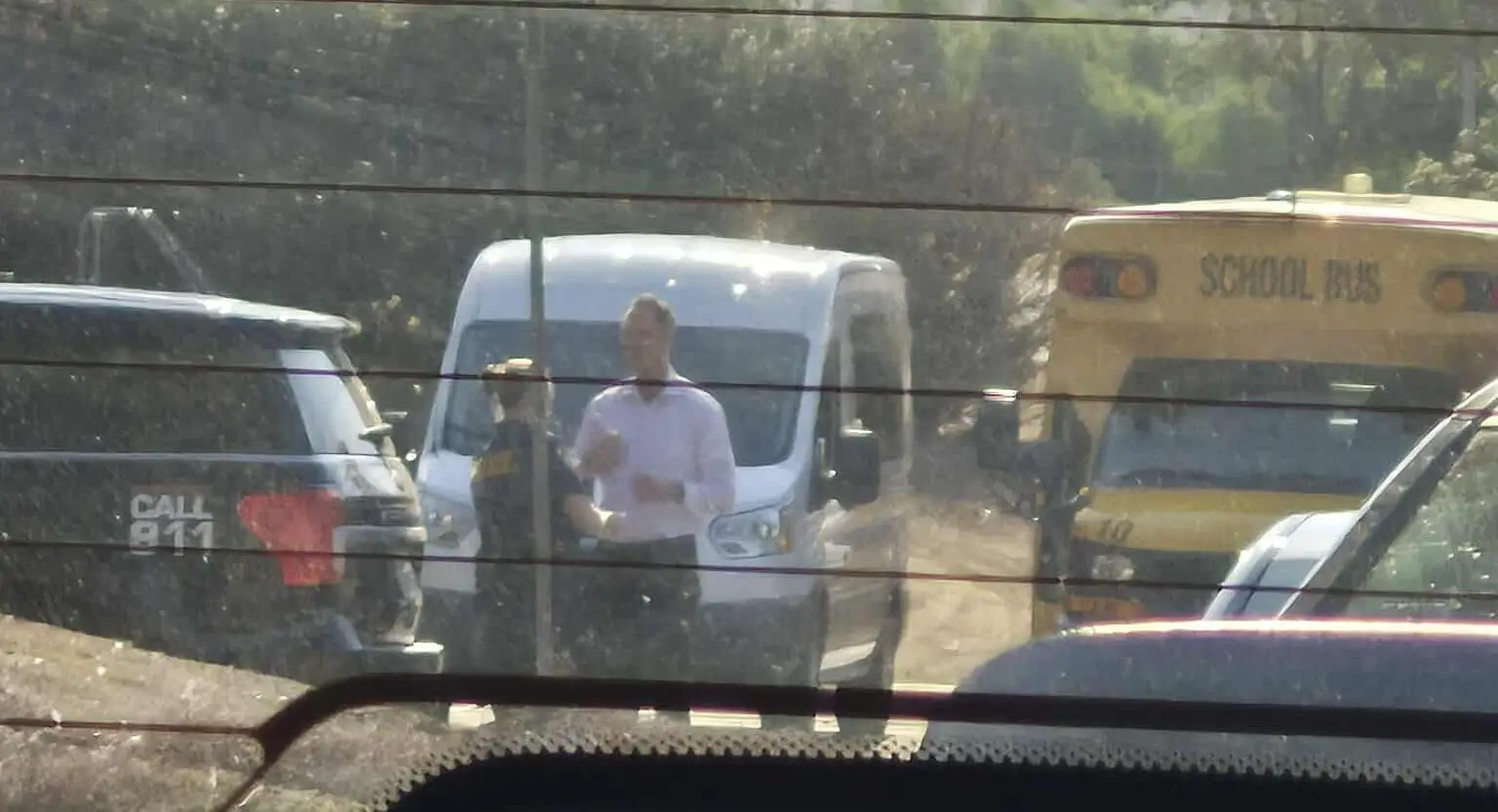Scene: Day One at Dehesa
EL CAJON, Calf.—The first day of school at Dehesa didn’t just feel messy. For many families who live in the district and send their youngest kids to the neighborhood K–6, it read like a priority list—one where they weren’t at the top.
By mid-morning, law enforcement cruisers sat near the entrance as officers used a loudspeaker to warn drivers. Parents had parked along Dehesa Road’s shoulder and, in the rush to make the bell, jogged children across live traffic. A pickup idled in the middle of a lane with its hazards flashing. The bus circle, families said, was functioning as a drop-off area—just not for them. Depending on who you asked, the upper lot and bus area were “for DMSA,” the Dehesa-Method Sports Academy, or simply “full.” Inside the office, at least some parents were initially told the campus was “closed” to parents on Day 1; others were waved through after a few minutes of confusion. “There was no notice,” one parent said. “No signs. No plan we could see.”
Vehicle parked in center of road in front of Dehesa School.
What Was Missing: The Ice Cream Social
What happened that morning has become the opening scene in a larger story families have been trying to tell for years: that the district’s energy has shifted toward supporting its charter-aligned programs, and away from the small, community school on which the district was built. The result, parents say, is not just inconvenience. It is a cascade of preventable problems—from lost traditions to scrambled communication to basic safety—that landed, predictably, on the youngest students and their caretakers.
To understand why the morning looked the way it did, parents point first to what wasn’t there: the longstanding meet-the-teacher “ice cream social.” In prior years, this event doubled as the soft launch of school—families met staff, learned where to go, picked up first-day materials, and left with a shared understanding of how arrival would work when the campus was full and the clock was running. This year, it didn’t happen. Parents described arriving at a campus that felt unfamiliar; some didn’t know their child’s teacher until they physically walked in to find the classroom. One parent put it bluntly: “We did not have a meet and greet like we have had every year… I still walked my child to their class. I wasn’t going to leave them with a teacher they’d never met.”
Families and former staff say that change was not accidental. For years, a staff member in the office organized the ice cream social, compiled first-day packets, and coordinated an orientation rhythm that made Day 1 predictable. Parents who worked closely with the office say that position is now vacant, or filled by a temporary staff member. They also point to a tangle of registration emails and digital forms that didn’t work for some families—links that bounced because access had been tied to a staff account that no longer exists. None of that caused a truck to stop mid-lane. But it all set the stage for a morning when the basic choreography of arrival—who goes where, when, and why—was left to rumor, instinct, and the luck of finding an open space.
The Night Before: Charter Open House, No K–8 Equivalent
The night before school started, another event did happen: an open house for the charter-aligned sports program and partner academies—Method/Summit/DMSA—on the Dehesa campus. Families describe it as organized and friendly: meet the coaches, find your room, get your bearings. That’s normal for a program onboarding dozens or hundreds of students new to a site. What felt abnormal to neighborhood parents was the absence of an equivalent warm-up for the K–8 students who live here. “It’s not that we’re against the program,” one parent said. “It’s that it’s pushing us out of our own school. We are the ones who don’t get the basics.”
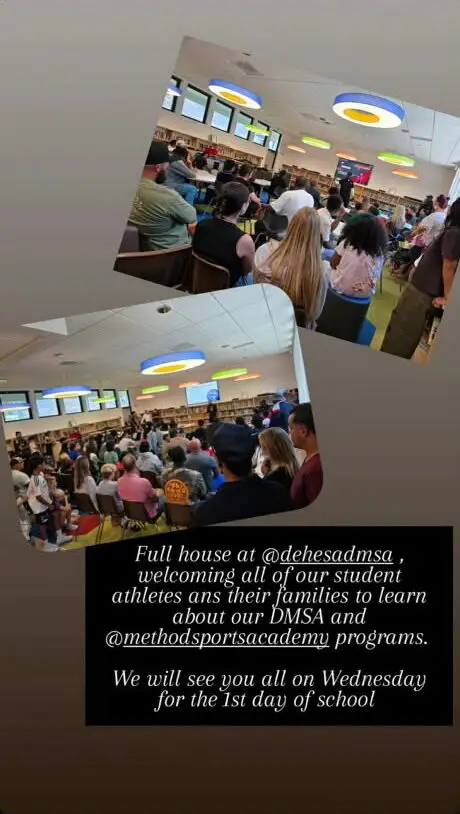
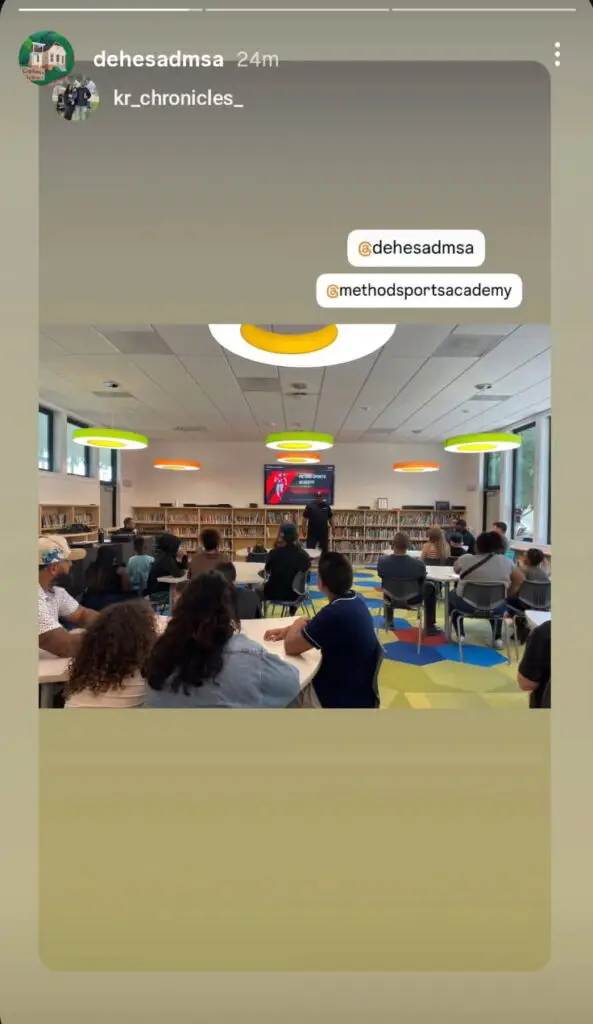
Consistent Accounts From Families
Several parents sent accounts from that morning that read nearly identically. There was no prior written notice of a “closed campus” policy. When families reached the lots at standard drop-off time, the front parking was at capacity. Some were told the upper lot or bus loop was for DMSA; others heard staff simply say there was no space. Parents parked on Sloane Canyon, on Dehesa Road, or wherever they could, and hustled children across. Younger students looked confused and asked strangers where to go. Site leadership, families said, appeared focused on internal issues; multiple parents recalled the principal walking behind the superintendent without engaging parents in the moment. “No signs, not posted in parking lot,” one wrote. “No hi from either of them.”
Photos provided to East of 52 show law enforcement on scene and vehicles lining the road near the entrance. In one thread, a parent noted the responding agency had spoken with the superintendent; officers told her they were addressing how to handle the situation and ensured vehicles were moved safely. None of the parents who contacted us reported injuries. All of them described a situation that felt unsafe for the age of the children involved.
If this were only about a hectic morning, the story would end here. Families insist it is not. They trace a line from staffing churn and closed loops in communication to policy choices that, taken together, left the neighborhood school without the basic scaffolding that makes Day 1 feel like a welcome instead of a test. There is no single villain in those accounts; there is a pattern of practice that privileges one set of needs over another, and the sense that the group being asked to adapt, again and again, is the one that lives here.
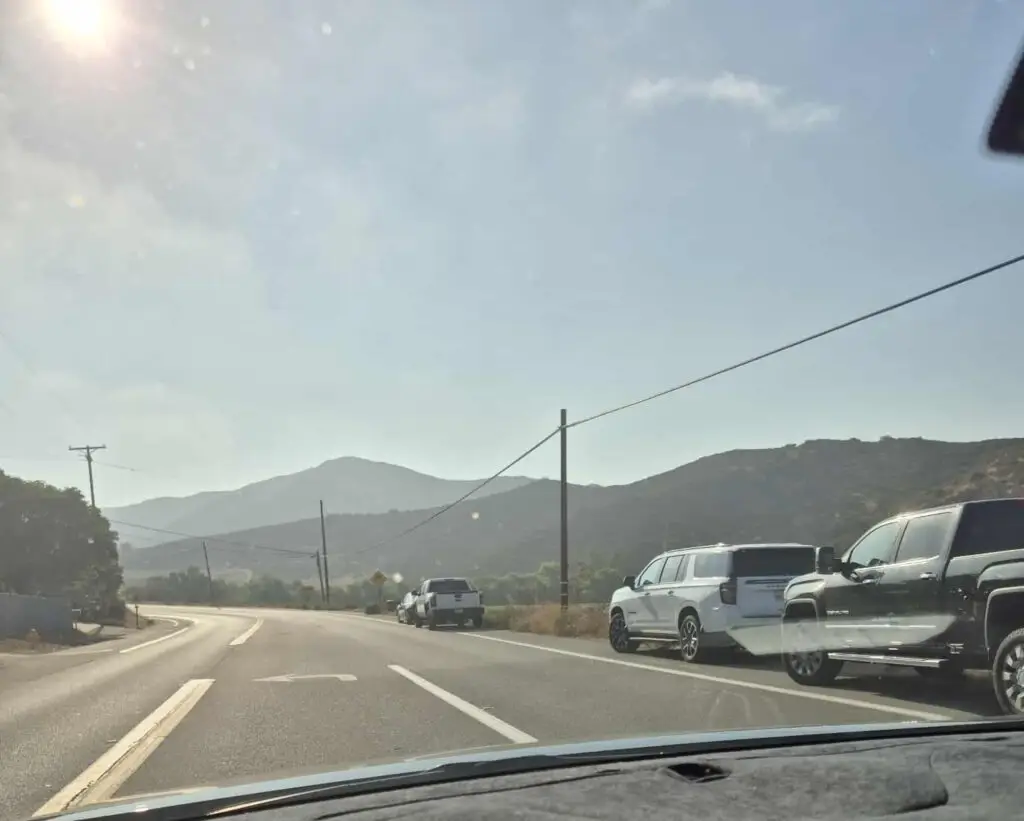
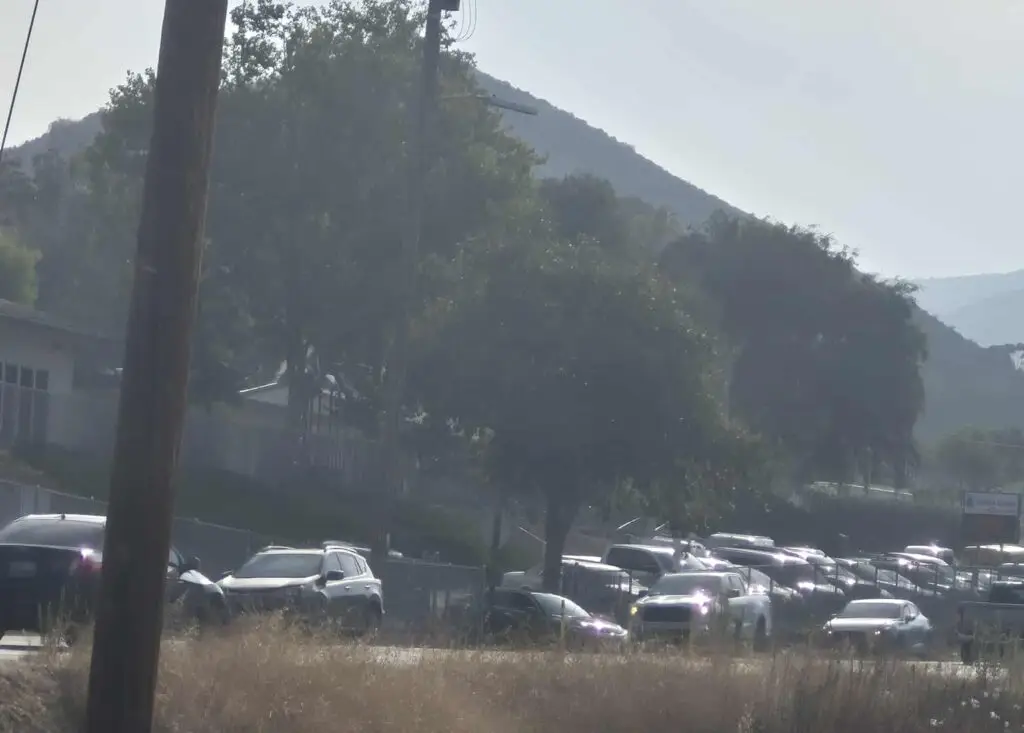
Board Night: Surprise on the Charter Side (Or is it?)
At the board meeting on Wednesday, August 13, the charter operator presented an update on the sports academy. According to parents in attendance, representatives appeared genuinely surprised by the depth of campus-level frustration. Is it entirely plausible that the charter side didn’t have a clear view into how Dehesa’s K–8 families experienced the rollout? We can’t be sure. It suggests a partnership where information travels unevenly: the program is prepped to welcome its cohort, but the host site’s legacy community—its families, traditions, and sense of place—does not receive equal preparation or voice. Voices suggest that the Method team has been present at board meetings with upset, and dismayed Dehesa families voicing concerns, with a version of them that is quite the opposite of their current stance, suggesting there seems to be a sudden shift now that media attention has been placed on the situation. It is worth noting, representatives of Method Schools did appear to be amenable to addressing the issues, and according to sources, felt genuine.
A Pattern Has Been Emerging
That imbalance shows up in small, telling ways. The ice cream social is not a line item; it is institutional memory. It is how tiny kids learn where to stand and who to ask for help. It is where parents see the faces that will be responsible for their children. When a district removes that ritual without a functional replacement, it communicates—intentionally or not—that continuity for the neighborhood school is optional. When the night before school is given over to an open house for a partner program with no parallel for the K–8 population, it communicates that some families will have the map and others will be trusted to find their own way. On Day 1, that difference is not theoretical. It is the difference between walking into a room you have seen and running across a road to a campus you haven’t.
Families are careful not to speak in absolutes. They know growth is complicated and that partnerships can benefit districts and kids when they are built with care. They also know what it feels like when their own school stops feeling like theirs. Emails pile up about new initiatives while basic questions about where to park go unanswered. Classroom assignments arrive late or not at all. A “closed campus” posture appears without explanation while parents of special-needs students explain, again, that they need to hand off to a human who knows their child. Meanwhile, a sleek open house welcomes a different cohort with signage, rooms, and smiling staff. No one has to tell them who was expected.
Context Without Motive
It is fair to note that authorizing relationships with charter programs bring administrative responsibilities and revenue to districts. That context belongs in any discussion about priorities. But families did not use words like “oversight fees” in their emails. They used words like “forgotten,” “pushed out,” and “not worth their time and effort.” They pointed to the physical world: lanes blocked, lots full, kids confused, officers on site. They described what they saw and how it made them feel. From a reporting standpoint, that is where this story stands or falls: on observable conditions and shared experience.
For the sake of transparency, here is what we can say with confidence based on the records and testimonies provided to East of 52. Multiple parents independently reported the same first-morning conditions and the same sequence: no prior written notice of parent restrictions; parking allocation that functionally favored the charter cohort; unmanaged overflow to public roads; and the arrival of law enforcement to help restore order. Parents and former staff described the removal of the customary meet-the-teacher event and the absence of an equivalent orientation for Dehesa’s K–8 families, alongside a charter-focused open house on the same campus the night before. Several parents expressed the belief that Dehesa’s core school community is being deprioritized in practice.
The Fix
The remedy here is not mysterious. It looks like the boring, necessary work of preparation: publish the arrival map, mark the lots, place the cones, post the crossing support, stage the staff, and greet the parents—especially the ones whose children have never walked into a classroom. It looks like restoring an orientation event for the neighborhood school or building a better one. It looks like coordinating with the charter partner so that both cohorts—those driving in from across the region and those walking in from across the street—arrive with equal clarity and an equal sense of welcome.
Dehesa is small. That has always been its strength. In a district this size, the difference between a community school and a shared campus is not a mission statement; it is what happens at 8 a.m. on the first day. This year, the message many families heard was that their school would fit around someone else’s plan. They are asking leadership to say something different next time—and to show it before the bell rings.
Editor’s note
Editor’s note: Parent accounts quoted here were provided directly to East of 52. Several sources requested anonymity to protect their children and relationships with the school. Photos reviewed by East of 52 show law enforcement on scene during the first morning drop-off.
Documentation & Evidence
The screenshots and photos that follow reproduce prior-year Dehesa communications (2024 ice-cream social/meet-the-teacher announcement, first-day arrival instructions/map, registration confirmations, and a principal back-to-school night message) alongside 2025 materials (charter/DMSA open-house notice from the night before Day 1 and photos of the Day-1 drop-off). Taken together, they document a clear shift: from long-standing K–8 orientation practices centered on Dehesa families to a charter-focused rollout with no equivalent K–8 event.
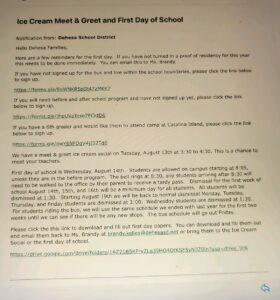
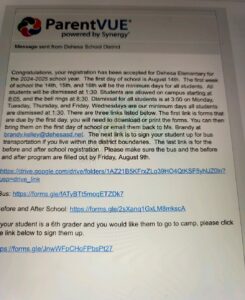


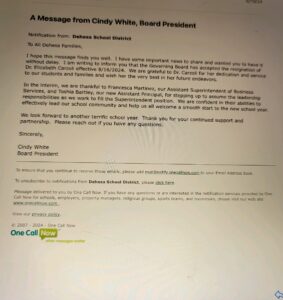
Seen something we should verify at Dehesa? Parents, students, and current/former staff can submit tips using the form below. Attach screenshots or photos (ok to redact personal info). Anonymity is respected and we don’t publish names without consent.
